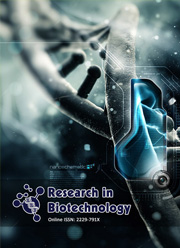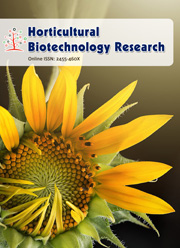Biosorption of Chromium Using A. towneri and R. eutropha
Keywords:
Acinetobacter towneri, Biosorption, Chromium, FTIR, Isotherm models, Ralstonia eutropha, SEMAbstract
Chromium is one of the toxic heavy metals which are discharged into the environment from various industries which causes a serious threat to human health as well as the environment. Biosorption is one of the effective methods for removal of chromium that uses dead or inactive biological matter. In the present study, batch biosorption experiments were carried out using Acinetobacter towneri and Ralstonia eutropha. Various parameters affecting biosorption such as temperature, pH, adsorbent dosage, contact time and initial metal ion concentration were studied. Removal of chromium was maximum at temperature 37â—¦C and pH 2 in both the bacteria. With an initial metal ion concentration of 10 mg/l, percentage removal of chromium was found to be 98.1 and 98.62 for R. eutropha and A. towneri respectively. Biosorption was maximum at an adsorbent dosage of 100 mg. Biosorption data fit well with Langmuir, Freundlich and Temkin isotherm models. The adsorption equilibrium was reached in about 180 minutes. The metal uptake capacity (Q0) was found to be 303 mg/g and 90.9 mg/g for R. eutropha and A. towneri respectively. The functional groups present on the biosorbents were identified by Fourier Transform Infrared Spectroscopy. The morphology of biosorbents was examined using Scanning Electron Microscopy.



 .
.